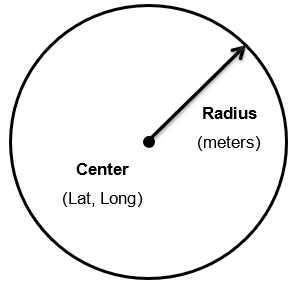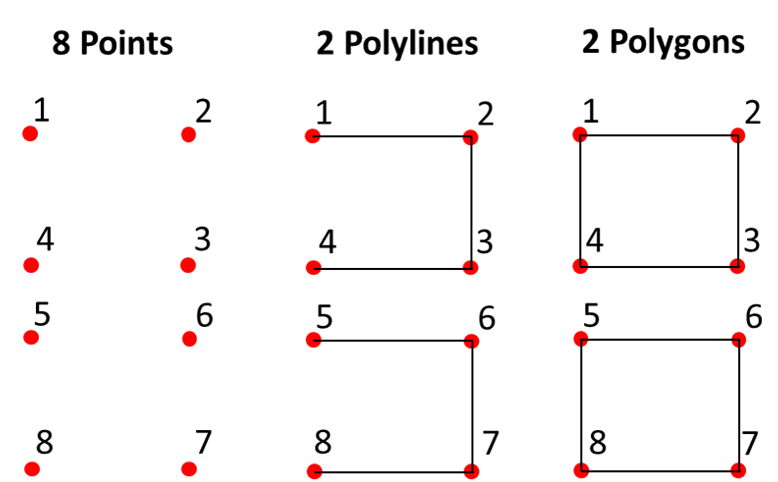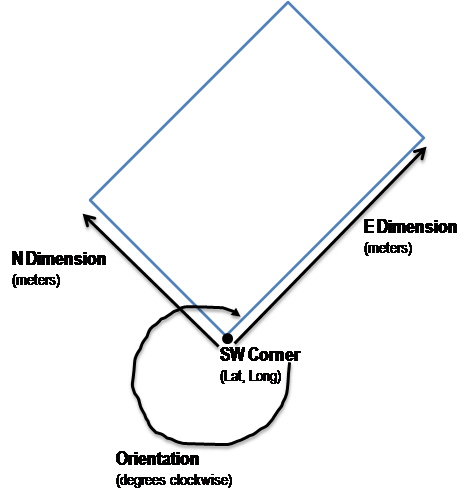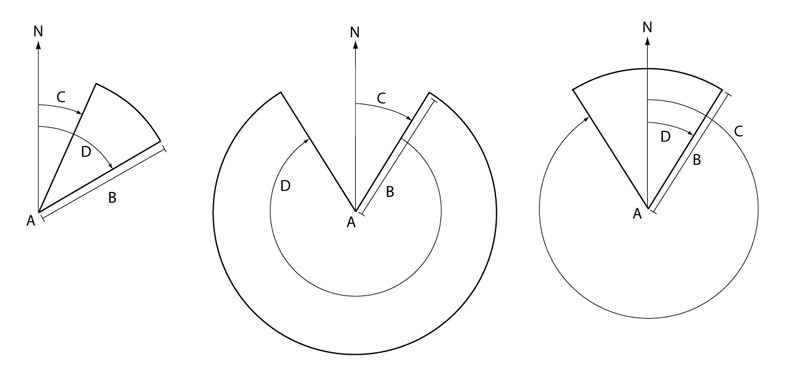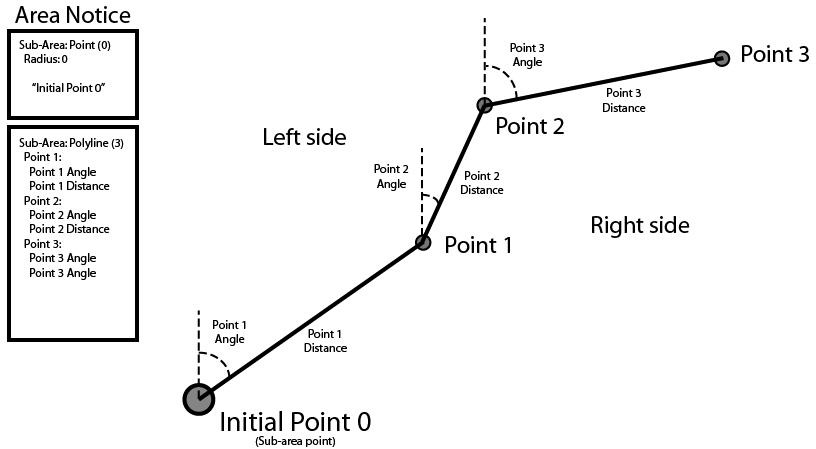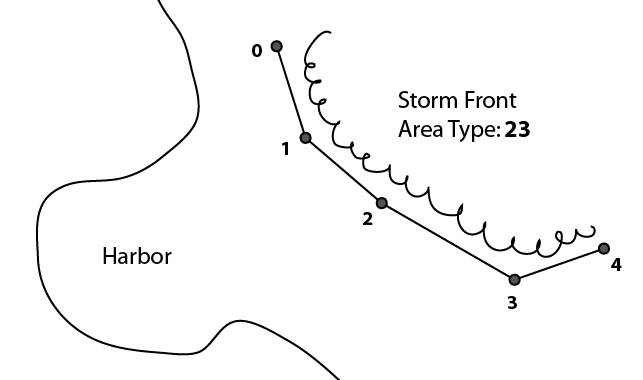Geographic Notice
Introduction/Additional information:
Introduction:
The purpose of the Geographic Notice is to transmit information that pertains to a region or area, for example a security zone, an area of fog, or dredging operations. The areas that are being defined can be circles, rectangles, polygons, or sectors. They can also be defined as a simple point or series of points (polyline). The Geographic Notice message can be made up of multiple subareas in which case the total area is the union of the subareas. This message can also be used to convey advisory lines or tracks (using the polyline subarea); however, the Route Information message should be used for recommended or directed routes.
Additional Information / usage notes:
- The information is time-dependent (i.e., has start date/time and duration). If a Geographic Notice (except for a cancellation message – Notice Description 126) is received without a valid start date/time and duration then it should be discarded.
- When the current month is December and the notice start month is January, the notice start year shall be the current year plus one; the notice start year shall be the current year in all other cases.
- The message may be transmitted prior to the start time/date to allow for advance notice. To avoid confusion, it should not be transmitted more than one day in advance.
- The message should not be transmitted beyond the designated end date/time except for a cancellation message. A cancellation message can be transmitted before the designated end date/time using the same Message Linkage ID with an Notice Description of 126 (cancellation), a Duration = 0, and start time fields all set to “not available.”
- Presentation software should automatically remove the Geographic Notice from the display after the end date/time or upon receipt of a cancellation message.
- Up to 5-slot messages can be created, but messages with more than three slots should be avoided. Messages with more slots are less likely to be received due to RF noise or packet collision.
- A circular sub-area (Type 0) with a zero radius (scale factor should also be set to 0) is a point that can be used as a node in a polyline/polygon. This is used when more precision is needed than is possible using the points in the polyline/polygon subarea (the trade-off is more subareas and a longer message). If several points are submitted within one Geographic Notice, the link field shall be used to indicate if the points are related to a polyline(s) or polygon(s).
- Polyline/polygon sub‐areas (Type 3 or 4) must follow immediately after a circle/point sub-area (Type 0 sub-area with 0 radius) in the same Geographic Notice message. The point defines the start of the line segments. If more than five points are needed for a polyline/polygon, then additional polyline/polygon sub‐areas can be used. However, they must follow immediately after the first polygon sub‐area and be contained in the same Geographic Notice message.
- The polyline/polygon sub‐area (Type 3 or 4) should be used to create a polyline/polygon. However, if more precision is needed to specify the points in the polyline/polygon then the circle/point sub‐area (Type 0 with radius set to zero) can be used, one sub‐area per point. All points (sub‐areas of Type 0) must occur in sequence and be contained within the same message. The polyline/polygon is formed by connecting the points.
- Polylines could be formed with a mixture of subarea type 0 and type 3 but shall start with subarea type 0. The link indicator shall be 1 whereas the last points/polyline link indicator shall be 0.
- Polygon could be formed with a mixture of subarea type 0 and type 4 but shall start with subarea type 0. The link indicator shall be 2 whereas the last points/polyline link indicator shall be 0. The last point (subarea type 0) or last point of the polygone (subarea type 4) shall be connected to the first point of the shape (closing the shape)
- Distances and bearings between points in the Geographic Notice should be calculated using Rhumb lines not Great Circles.
- The Message Linkage ID and the source MMSI can be used to link additional text (e.g., a separate Linked Text message). This information must be included in both the Geographic Notice and additional Linked Text message.
- The total area defined by one Geographic Notice (one Message Linkage ID) is the union of all of the sub‐areas contained in the message.
- If the same Message Linkage ID is retransmitted with different sub‐areas and/or times the presentation software should replace the old Area with the new.
- The Message Linkage ID must be unique across all ASMs to which it applies. In this way, the Message Linkage ID and Source MMSI are connected to the same text message.
- A message version number is encoded as part of the message; If the received version number is different than what the display system has been programmed for, a message should be displayed to the operator indicating the mismatch in the version.
- All directions are relative to True North, all positions are WGS‐84 Datum, and all distance calculations should be in accordance with IEC 61993‐2 Annex G
Permitted as from:
18/10/2021
Registrant:
EU
Physical link:
AIS
DAC or VPFI:
200
FI / Message ID:
42
Version:
0
Technical point of contact:
EU
State:
in force
Number of slots (max):
5
Last modified:
25/02/2025 - 15:38

